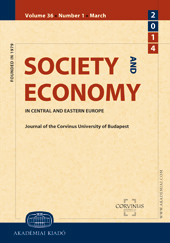Education 2.0: Exploring the challenges of Corvinus University in the long tail economy of global higher education
Education 2.0: Exploring the challenges of Corvinus University in the long tail economy of global higher education
Author(s): Sándor Kerekes, András NemeslakiSubject(s): Higher Education
Published by: Akadémiai Kiadó
Keywords: Corvinus University of Budapest; Hungarian higher education; Bologna reform; educational strategy; university capabilities; social challenges; long tail business model;
Summary/Abstract: Our basic storyline is how the business and economics higher education landscape has changed with the introduction of the Bologna programs. We borrowed the fashionable long tail concept from e-business, and used it for modeling the new landscape of internationalization of universities. Internationalization, mobility, and the appearance of the internet generation at the gates of our universities in our opinion has brought us to a new e-era which, appropriately to our web analogies we might as well call Education 2.0.In our paper first we show the characteristics of the long tail model of the Bologna-based European higher education and potential messages for strategy making in this environment. We illustrate that benchmarking university strategies situated in the head of the long tail model will not always provide strategic guidance for universities sitting in the tail. For underlining some key concerns in the Hungarian niche, we used Corvinus University as a case study to illustrate some untapped challenges of the Hungarian Bologna reform. We explored three areas which are crucial elements of the “tail” strategy in our opinion: a) the influence of state regulation, b) social situations and impacts and c) internal university capabilities.
Journal: Society and Economy. In Central and Eastern Europe ǀ Journal of the Corvinus University of Budapest
- Issue Year: 31/2009
- Issue No: 1
- Page Range: 125-146
- Page Count: 22
- Language: English

